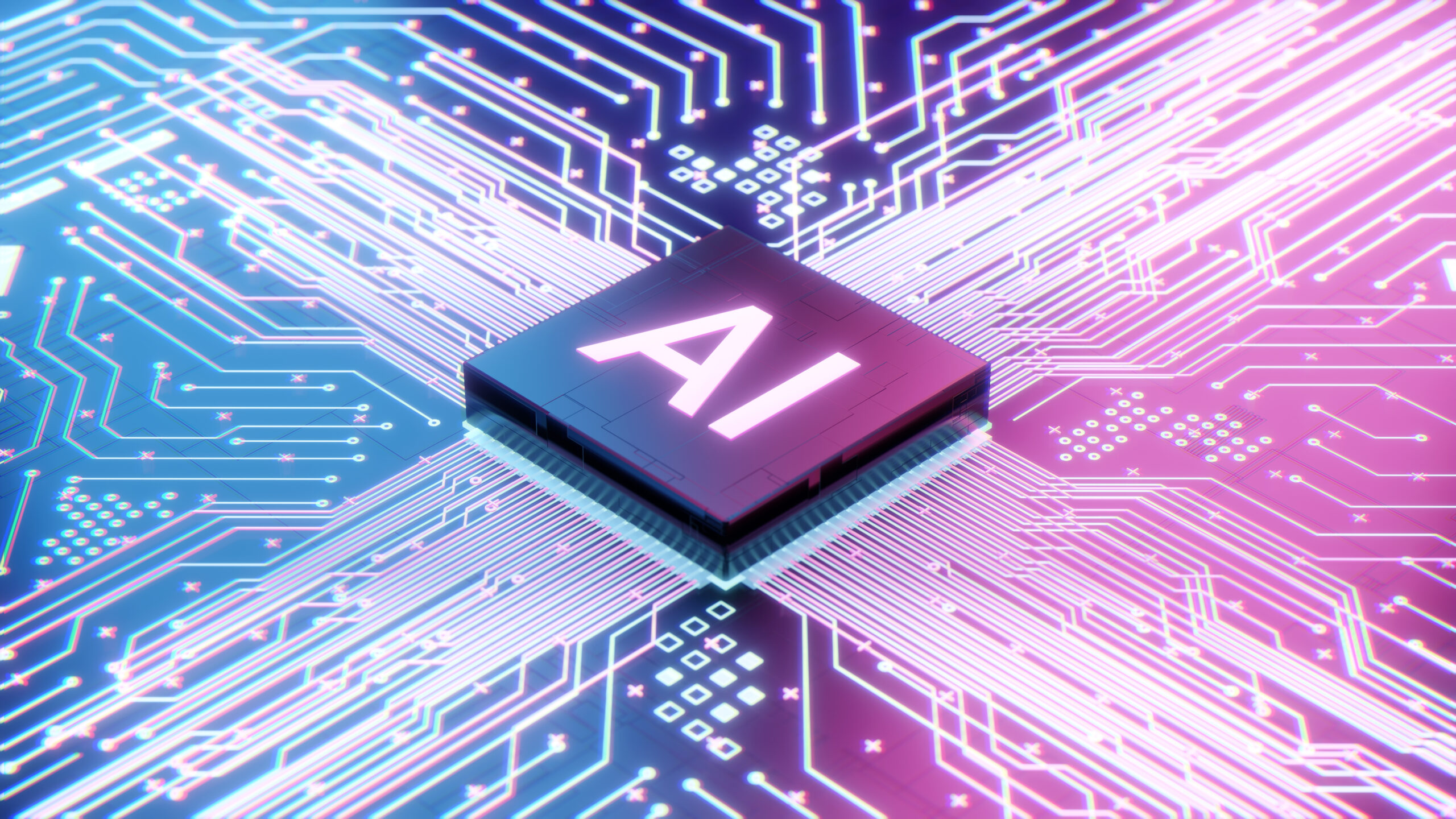Key Trends Shaping The Future of Enterprise Software Development
Everyone knows some variation of the old saying, “The only certainty in life is change.” Change happens to everything constantly, often in imperceptible ways. With technology, emerging trends can cause huge disruptions that get a lot of attention.
Attracting attention doesn’t necessarily mean that a technology is worth adopting, though. Learn more about key trends that will influence the future of enterprise software development. Whether you’re a developer or a business leader, you need to anticipate how these technologies will affect your industry.
The Evolution of Enterprise Software Development
Software development has changed considerably over the last few decades. The internet didn’t become a commercialized product accessible to most Americans until the mid- to late-90s, and no one owned a smartphone until Apple released its first iPhone in 2007.
Cloud technology became critical as the Covid-19 pandemic forced people to work from home, and it hasn’t slowed down since.
In 2022, global IT expenditure on enterprise software reached approximately $783 billion, a 7.1% increase from the prior year. With annual growth frequently surpassing 10%, the enterprise software sector is the most rapidly expanding segment within the IT realm.
These advances influence the evolution of enterprise software development by forcing product developers to consider user expectations. Keeping up with emerging trends often means attracting more users, streamlining processes, and saving money in the long run.
Key Trends Shaping the Future

Many of the key trends shaping technology will eventually seem like obvious steps toward the future. Right now, though, they can feel a bit confusing or mysterious. Concentrate on the following trends to move ahead of competitors and find more effective options for your software development enterprise.
Cloud-Native Development

Cloud technologies have become increasingly important as more people work remotely and rely on mobile devices. Cloud-native development focuses on building applications for the cloud.
When an enterprise software development company uses a cloud-native strategy, it promotes features like:
- Rapid, automatic scaling that keeps pace with user needs.
- Flexibility that lets apps work on diverse machines with different operating systems.
- Reliability that keeps core features functional during disruptions.
Cloud-native development requires a unique tech stack that includes tools like Docker, Kubernetes, Git CI/CD, and Node.js. Once you have the right technology in place, application development becomes faster and less expensive.
Plenty of companies have already embraced cloud-native development. For example, Google Maps is an API-enabled app built and distributed in the cloud. Companies like Microsoft and IBM also use cloud-native development so they can easily distribute applications to users regardless of which operating system or device they use.
Artificial Intelligence and Machine Learning Integration

Artificial intelligence and machine learning have gotten a lot of media coverage lately. Experienced enterprise software developers know that these technologies aren’t fads. AI and ML can analyze big data to find patterns the human brain can’t comprehend. That leads to several benefits for enterprises, such as:
- Streamlined, automated business processes.
- Improved customer services.
- Automated assistants that perform tedious tasks without much human oversight.
- Better security surveillance.
- Trend forecasting that leads to increased sales and improved marketing.
Many companies combine AI with enterprise software development. Google stands out as a true leader in this area as it uses artificial intelligence and machine learning in products like:
- Waymo, a self-driving car technology.
- Google Duplex, an AI tool that started as a call-automating technology but has evolved to offer many more features.
- Dialogflow, a lifelike, AI-powered customer service tool with virtual agents.
Generative AI Implementations
Most of today’s popular AI tools rely on predictive AI. Predictive AI analyzes historical data to anticipate future needs.
However, generative AI produces original content.
Generative AI in enterprise software product development requires unique skills and careful planning. Generative AI roadmapping should consider the importance of:
- Resource planning
- Risk mitigation
- Continuous product improvement
- Data requirements
- Industry and government regulations
McKinsey reports that “generative AI could add trillions of dollars in value to the global economy.” Some of today’s most popular generative AI tools include ChatGPT, Stable Diffusion, and GitHub Copilot.
While tools like GitHub Copilot can assist in enterprise level software development, enabling most AI technologies requires assistance from knowledgeable professionals. KMS Technology has helped companies like Katalon and Kobiton embrace AI technology to improve their software.
Benefits of using generative AI
- Testing code rapidly.
- Comparing multiple solutions to solve a problem efficiently.
- Reducing the number of manual tasks performed, letting staff members focus on strategic work.
- Enhancing a team’s creativity and innovation.
Challenges to GenAI Implementations Without a Technology Partner
- Lack of Expertise: Generative AI, especially models like GPT and its variants, are cutting-edge and require a deep understanding of machine learning and neural networks. With an expert on board, it’s easier for businesses to harness the full potential of such models.
- Scalability: If the AI model becomes integral to the business, scaling it to meet growing demands might be challenging without the expertise and infrastructure provided by a tech partner.
- Security Concerns: AI models can be vulnerable to attacks -especially when deployed in the cloud. Protecting the models and the data they use without the proper knowledge can be risky.
- Lack of Customization: Ready-to-use models might not cater to specific business needs. Without a tech partner, customizing models or creating bespoke solutions can be a challenge.
Microservices Architecture

Microservices architecture breaks monolithic applications into small, self-contained features that enterprise software development companies can weave together to create software that meets specific needs.
The containers that hold microservices are reusable, so an enterprise software developer doesn’t always need to write a new feature for each application. Instead, they can add an existing microservice that performs the task well.
Whether building enterprise mobile apps or larger systems, microservices benefit users and developers by:
- Scaling automatically to keep pace with user needs.
- Taking a flexible approach to development that functions in most IT environments.
- Increasing the speed of deployment.
As with all technologies, microservices architecture has some potential downsides. Using the strategy could:
- Increase organizational complexity.
- Increase application maintenance costs.
- Contribute to performance issues.
A strategic approach can minimize these downsides. Partner with a firm experienced in enterprise software product development to build high-quality apps that match customer requirements
Enhanced Cybersecurity Measures

Increased digitization has created more opportunities for hackers to attack victims successfully. Cybercrime will likely cost the economy $8 trillion in 2023 and $10.5 trillion by 2025.
Enterprise software developers should add cybersecurity to every stage of the development process. That approach will help protect clients from cyberattacks. When building enterprise level software, take advantage of technologies like:
- Artificial intelligence that searches for vulnerabilities in code
- Encryption that prevents attackers from viewing data
- Behavioral biometrics that identify unexpected behaviors from users
- Zero-trust architecture that never assumes a person or device isn’t a risk
Emphasis on User Experience (UX) and Interface Design

Today’s users want more than an application that gets the job done. They want pleasant experiences that anticipate their needs and offer simple solutions.
Good UX/UI focuses on the user’s experience by assuming they don’t know how the app works. Instead of generic icons that launch functions, you choose icons with meaning. For example, you might use the image of a floppy disc to indicate that tapping the icon will save progress.
Users also want reassurance that enterprise applications work as they expect. Instead of simply saving when someone taps the floppy disc icon, the app might display a progress bar that shows when it has successfully saved all changes.
The Rise of Decentralized Technologies

Decentralized technologies are becoming commonplace for users and developers. Git stands out as the most popular software version control system, largely because its decentralized approach to storing repositories protects work from corruption and data loss.
Those traits also make decentralized technology appealing to companies. Enterprise software development services include decentralized applications often attract clients that want:
- More transparent data they can harness and analyze.
- Collaborative features that don’t rely on centralized repositories.
- Security that doesn’t give hackers a single target to attack.
Several industries have already started implementing decentralized technologies. For example, decentralized finance (DeFi) uses ledgers distributed across numerous devices to make lending and exchanging assets easy and secure. When multiple users have records of an exchange, everyone can verify that an event happened. That prevents common flaws that can lead to overdraft charges, fraud, and identity theft.
Logistics companies can also use decentralized technology to improve supply chains. Companies can use data from an army of devices instead of relying on centralized software to optimize routes. As a result, logistics companies can make real-time adjustments that improve efficiency and ensure products reach their destinations.
Continuous Integration and Continuous Deployment (CI/CD)

Continuous integration and continuous deployment (CI/CD) is a relatively new development strategy emphasizing the importance of getting products to market quickly.
After releasing an application, feedback tells developers and AI assistants how to improve the product. In many cases, AI can adjust code to reach user needs. That leaves more time for human developers to think creatively about designing new products that serve future needs.
With CI/CD, enterprise software development doesn’t end until the company stops supporting the application. Throughout the app’s lifespan, it undergoes planning, coding, building, testing, releasing, deployment, operation, and monitoring cycles.
Challenges to Adopting New Trends
Adopting new technological trends always comes with some challenges. As you integrate the above trends into your enterprise application development process, you might encounter roadblocks from:
- Legacy systems that don’t want to cooperate with newer technologies.
- High costs associated with buying into the newest tech (although they often pay for themselves over time).
- Resistance from stakeholders who don’t want to change or don’t see the benefits of adding new options to their tech stacks.
How can you overcome these challenges? The answer depends on what issues you face.
If you have existing technology that doesn’t integrate well with new applications, use a phased rollout that lets you identify individual problems as they arise. It’s much easier to find and solve a few small issues than it is to research an entire enterprise app. Plus, a phased rollout means some features will continue to work even when others fail.
When it comes to resistance to change, find support from executives, managers, and other high-ranking members within the organization. Their leadership could mean a great deal as new enterprise software reaches employees.
Appropriate training can also help app users feel more comfortable with change. Set up mandatory training sessions where people can get used to the new technology.
Embracing New Trends in Enterprise Technology
New trends like machine learning, generative AI, distributed systems, and CI/CD will transform how enterprise applications function. As technology evolves, businesses need to change with the times. The right guidance and training could significantly affect how your company adopts, accepts, and uses new technologies.
Contact KMS Technology today to set up a consultation. Our experienced tech consultants can help you review your needs, develop a plan for upgrading your tech stack, and get everyone on board with the changes. Reach out now to learn more about how we can help!









